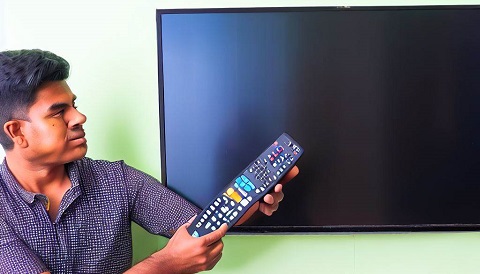The size of a television, LED, LCD monitor, or any display device is a critical factor that greatly impacts the device’s viewing experience, comfort, and utility. As technology advances and consumer preferences evolve, screen sizes have diversified, offering a wide range of options to cater to different needs and environments. In this comprehensive exploration, we’ll delve into the significance of screen size, factors influencing size selection, and how screen dimensions are measured.
The Significance of Screen Size
The size of a screen is much more than a mere numerical value; it significantly influences how content is perceived, how immersive the viewing experience is, and how the device fits into its intended environment.
Immersive Viewing Experience
A larger screen size enhances immersion, making viewers feel more connected to the content. Whether watching movies, playing video games, or enjoying sports events, a larger screen offers a sense of presence that smaller screens might not achieve.
Visibility and Clarity
A larger screen size often translates to larger text, images, and details. This can improve readability and overall visibility, which is especially crucial for educational or professional use, such as presentations or data analysis.
Comfortable Viewing Distances
Choosing the right screen size also affects viewing comfort. Viewers must sit farther away to avoid strain for larger screens, while smaller screens necessitate closer proximity for a clear view.
Aesthetic Integration
The size of a display device has aesthetic implications for its placement within a room or environment. Smaller screens might be suitable for compact spaces, while larger screens can serve as focal points in more spacious areas.
Factors Influencing Screen Size Selection
Several factors contribute to the decision-making process when selecting the appropriate screen size:
Intended Use
The primary purpose of the display device greatly influences the ideal screen size. A TV for cinematic experiences might require a larger screen, while a monitor for office work may be more modest in size.
Viewing Distance
The distance between the viewer and the screen plays a significant role. For home theaters, larger screens are recommended for viewers sitting farther away, while desktop monitors require a balance between screen size and proximity.
Available Space
The physical dimensions of the room or environment where the device will be placed impact the feasible screen size. A cramped room might not accommodate a large TV, whereas a spacious living room could comfortably house one.
Content Consumption
Consider the types of content you’ll be consuming. Gaming, high-definition movies, and sports events often benefit from larger screens, while web browsing and office tasks might be more comfortable on a moderately sized monitor.
User Preferences
Ultimately, individual preferences play a significant role in screen size selection. Some users prefer the cinematic experience of a large screen, while others prioritize portability and space savings.
How Screen Size is Measured
Screen size is typically measured diagonally across the display area, from one corner to the opposite corner. This diagonal measurement provides a standardized way to compare screens of different aspect ratios. The diagonal size is often expressed in inches or centimetres, depending on the region.
Aspect Ratio Consideration
It’s important to note that the screen’s aspect ratio affects the perceived size. For example, a widescreen display with a 16:9 aspect ratio will have a larger diagonal measurement compared to a screen with a 4:3 aspect ratio of the same height.
Bezel and Actual Viewing Area
The diagonal measurement represents the entire screen, including the bezel (the border around the screen). When assessing the actual viewing area, it’s crucial to account for the bezel size, especially when considering multi-monitor setups.
The Evolution of Screen Size
Screen size trends have evolved over the years, closely tied to advancements in display technology and changing consumer preferences:
The CRT Era
In the early days of CRT (Cathode Ray Tube) displays, larger screens were inherently bulkier. As technology improved, larger CRT screens became more accessible for home entertainment.
Flat Panel Revolution
The advent of flat panel displays, including LCDs (Liquid Crystal Displays) and LEDs (Light Emitting Diodes), led to a shift toward thinner and more lightweight screens. This allowed for larger screen sizes without the space constraints of bulky CRTs.
The Rise of High Definition
The transition to high-definition (HD) content prompted a demand for larger screens that could showcase increased clarity and detail. This drove manufacturers to offer larger TVs and monitors with better resolution.
Smart Displays and Beyond
Modern display technologies, including OLEDs (Organic Light Emitting Diodes) and QLEDs (Quantum Dot LEDs), have enabled the creation of thinner screens with better color accuracy and contrast. Smart features have further integrated displays into our daily lives, influencing the optimal screen size for different uses.
Conclusion
Selecting the right screen size for a TV, LED, LCD monitor, or any display device involves a thoughtful evaluation of individual needs, preferences, and intended uses. A larger screen can enhance immersion and visibility, while a smaller one might prioritize space savings and portability. Technological advancements and evolving consumer demands continue to shape the available options, allowing users to find the perfect fit that complements their lifestyle and enriches their viewing experiences.
Frequently Asked Questions (FAQs)
How is screen size measured for TVs and monitors?
Screen size is measured diagonally from one corner to the opposite corner of the display area. This measurement provides a standardized way to compare screens of different aspect ratios. It is typically expressed in inches or centimetres and includes the entire screen, including the bezel. The aspect ratio and viewing area may vary based on the device’s design.
How do I choose the right screen size for my TV or monitor?
Consider factors like intended use, viewing distance, and available space. For an immersive experience, opt for a larger screen in spacious rooms, while smaller screens are ideal for closer viewing. Check the screen’s diagonal measurement (in inches or centimetres) to understand its size. Keep in mind the aspect ratio and account for the bezel. Ultimately, the right size aligns with your preferences and how you plan to use the device.
What does the display size refer to?
Display size refers to the physical measurement of a screen diagonally from one corner to the opposite corner. It’s typically expressed in inches (or centimeters in some regions) and serves as a key indicator of the screen’s dimensions. This measurement is essential for understanding the overall size of devices like TVs, monitors, and smartphones. It’s important to consider your intended use and viewing distance to select an appropriate size that aligns with your preferences and requirements.






